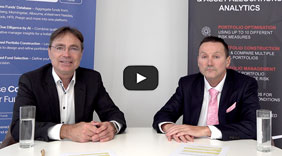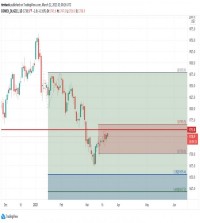|
By: Bailey McCann, Private Equity Strategies Historically, secondary market transactions in private equity and elsewhere have tended to equate with fire sales as one party tries to get out of a deal turned sour. But as deal flow everywhere increased in the pre-crisis boom, investor expectations changed, and 2008 changed the game again - secondary transactions are taking off. These deals are less fire sale, and more garage sale. Often, firms or investors simply want to exit an investment quickly, and without a lot of hassle. Buyers in the secondary market now find themselves with a record number of deals to choose from. Secondary transactions as the name would suggest, operate at a lower premium and often on an accelerated time frame. However, deal flow in this market has increased to record levels, discounts are also tightening up. Traditionally, buyers in this market were often strategic buyers, and secondaries focused firms. Now, non-traditional buyers are entering the space with the help of advisors and placement agents adding to returns and shortening the J-curve.
"It's a good thing that the buy-side is looking more at secondaries," says Mathieu Drean, Head of Global Secondaries at placement agent, Triago in an interview with Private Equity Strategies. "There is lower risk, assets are more transparent. The prices are attractive as are the returns- it is an excellent way to deploy capital efficiently and lucratively." Rapid deployment of capital is a core driver of growth in the secondaries market. Private equity investors have been frustrated over the last few years with the slow down in capital deployment. "In many cases going to the secondary markets means, capital is deployed faster and the return comes back faster," he says. Transactions in the secondary market were a record $26bn in 2012, marking the highest aggregate deal value in a single year since 2006. The only year reporting a larger number was 2007, where 336 private equity-backed secondary buyouts were valued at $94bn. According to Preqin, 2013 has seen approximately 107 transactions totaling to $19bn. Almost half of these transactions were in Europe, reflecting the impact of rolling debt crises and the extreme tightening of credit in the Eurozone. The top five secondary buyout deals tracked by Preqin included the ’β¬3.1bn acquisition of ista by CVC Capital Partner from Charterhouse Capital Partners, as well as the ’β¬1.13bn secondary buyout of Cerved by CVC Capital Partners from Bain Capital and Clessidra Capital Partners. Secondary energy and real estate funds are also seeing a steady uptick in pricing as investors find opportunity, according to a study of first quarter transactions by Harken Capital Securities, a secondary advisor. Authors note that secondary specialists are increasingly using leverage to meet seller expectations as the market grows and gets more competitive. "Secondaries are increasingly just another part of the portfolio," Drean explains. "Sellers are often looking to offload part of their portfolio and a growing group of buyers are there to pick it up. We expect this trend to continue." This view is echoed by Bill Murphy of Cogent Partners, a private equity focused advisory and investment firm that is involved in the secondary market. "We are seeing more GP recapitalizations/disrupted cycle activity and we expect this to continue as the amount of illiquid assets out there continues to grow. In spite of reasonably good exits over the past 12 months or so, youβre still seeing the amount of investor capital tied up in PE funds in terms of NAV plus remaining unfunded, increasing year-over-year. The secondary market is often the liquidity answer for investors who are saying 'I've held this investment for 12 years and just want to realize what value remains and be done with it.'" Murphy notes that much of the secondary market activity for 2013, will likely happen toward the end of the year. ""The secondary market is generally less active in the first quarter than in the remainder of the year. A key reason for this, is that during the first quarter the most recent financial statements available are as of September 30th of the prior year and, as such, are out of date. This is caused by the fact that the partnership financials undergo a full audit at year-end, which often takes a substantial amount of time to complete and therefor results in a longer lag in reporting financial results to limited partners than at any other time of the year." "Someone in march trying to plan a sale is looking at stale data, in a market when there has been a significant move in the equity markets - they're probably going to wait until the second half of the year," Murphy says. Fundraising for secondary funds is still going however. In April, StepStone Group announced the final closing of its secondary private equity fund, StepStone Secondary Opportunities Fund II, LP, with total commitments of $450m. The Fund exceeded its original target of $350m, closing at its hard cap. Together with allocated capital from separately managed accounts, StepStone has raised approximately $650m for their strategy in the secondary markets. Limited Partners in the Fund consist of U.S and international investors, including public and corporate pension funds, insurance companies, endowments and foundations, family offices, and financial service and advisory firms. StepStone is a global private equity firm that oversees more than $50bn of private equity allocations, including approximately $10bn in assets under management. In our February issue, we also spoke with NewGlobe Capital Partners on their new fund, and secondary transaction structure. In that piece, Andrew Hawkins, founder and CEO of NewGlobe Capital Partners, noted, "Over the next 2 years we could deploy $1bn in capital, some of that could even come quicker than we expect. The counterparties are heavily engaged with us and from a deal flow perspective this is as good as it gets." *Image Source: Triago Quarterly
| |
|
This article was published in Opalesque's Private Equity Strategies our monthly research update on the global private equity landscape including all sectors and market caps.
|
Private Equity Strategies
Dealmakers Q&A: The Secondary Market Transitions From Fire Sale to Tag Sale |
|





 RSS
RSS












